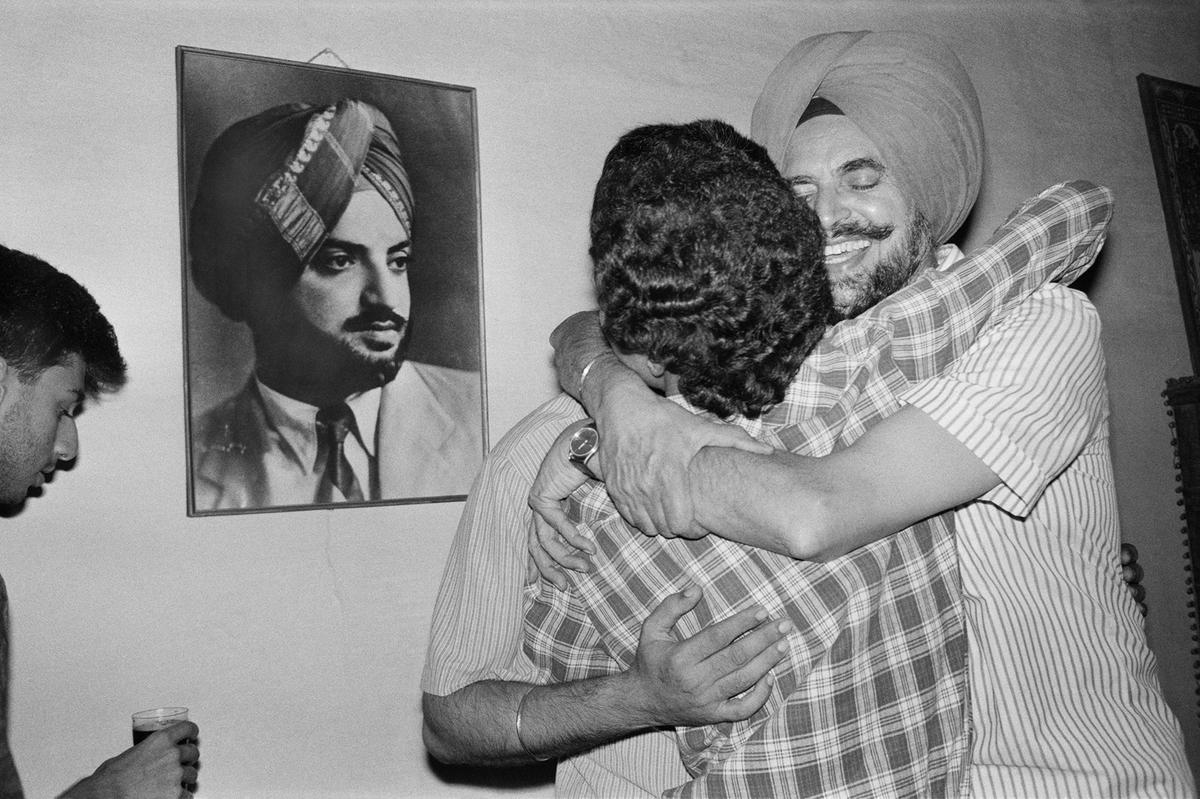The artist on why she wanted the photobook, which explores anecdotes of a past that continues within still frames, to feel like a cheap paperback novel
The artist on why she wanted the photobook, which explores anecdotes of a past that continues within still frames, to feel like a cheap paperback novel
Visual artist, bookmaker, and recipient of the 2022 Hasselblad Award, Dayanita Singh, often talks about how photography is burdened by its facticity. There seems to be a perennial need for imagery to be contextualised, when photographs themselves hold a narrative. The passionate curator sees her photographs as raw materials to mould and meld, which is apparent in her multiple photobooks such as Myself Mona Ahmed (2001), Go Away Closer (2007), the seven volumes that make up Sent a Letter (2008), and Museum Bhavan (2017) — an experiment in transforming space.
In her recent photobook — that she terms a photo novel —, Let’s See, Dayanita’s imagery is replete with ongoing memories spread across 149 photographs. Published by her long-time publisher, Steidl, the novel was a result of the COVID-19 lockdown that prompted her to pour over her carefully archived contact sheets, to reveal anecdotes of a past that continues within still frames. Ahead of her book’s launch at The Raw Mango Store, New Delhi on September 17, Dayanita discusses the conversational elements that are buried within her imagery, and delves into her process of editing a 40-year archive to carefully caress moments from the 1980s and 90s.

Dayanita Singh
The page turner
Let’s See has the inherent quality of a flipbook, where the viewer does not necessarily have to turn each page for stories to reveal themselves. This seems rather deliberate and considered, as Dayanita’s recent Instagram story reads “Photography is a way of listening. Let’s See was made entirely in conversation within hearing distance.” In an interview over Zoom, she explains that what she truly wanted from this book is the ability to turn the pages from either side with absolute ease; in fact if she had her way she would have made it with a circular binding.
“I had mentioned to Steidl that I wanted the book to feel like a cheap paperback novel that you would buy at a train station, or an airport — read it on the way and maybe even leave it behind. You will also notice that the end and the cover are connected. That is my clue to say the story goes on,” elucidates Dayanita. There seems to be an ease with which the people exist within her photographs in the novel, almost as if one has stepped into a room that holds the presence of her loved ones. Steeped in theatrical poses, her muses seem unperturbed by the presence of the camera.

An excerpt from Let’s See
| Photo Credit: Dayanita Singh
Making sense of editing
“When I made these photographs, people were not at all conscious of being photographed and I did not consider myself a photographer. The photographs just happened during long ongoing conversations; they were my way of listening,” she elaborates. To edit a book with photographs that span an elaborate archive can’t be easy, but there are certain patterns that the visual artist chooses to articulate her work with.
Dayanita mentions that being an editor is about being ruthless, but her advantage here was the three decades that had passed which allowed her the opportunity of barely recognising her imagery. “The editing could have gone in so many different directions. But when I saw the picture of the two boys looking through a magnifying glass at the mirror, I started to notice that there was something about how people were seeing. What were they looking at? That very taut feeling of Lets See became the principle of the editing process; a book that has been edited taking into account the residue of the previous page,” says the artiste. The sequencing was the true challenge, and the bookmaker ended up using five different maquettes until the form emerged. “That’s when this idea of a ‘stream of consciousness’ novel came about,” she continues.

An excerpt from Let’s See
| Photo Credit: Dayanita Singh
Capturing words
Dayanita chanced upon photography during her stint at the National Institute of Design, where she had initially enrolled to study graphic design. Her debut photobook, on the Hindustani Classical maestro Zakir Husain (1986) was created as her final year student project. Since her earliest encounter with photography, she sees the camera as a tool that gives her the permission to be a part of anything she feels fascinated by. For her, the endeavour is about getting the reader to engage with work beyond its photoness. With Let’s See she emphatically questions, “Can images work in place of text, and what kind of meaning would emerge since photos can go where there are no words?” Now seems to be the time for a new language.
Let’s See (₹ 2,000) is available on steidl.de and at Artisans Art Gallery, Mumbai.
Stay connected with us on social media platform for instant update click here to join our Twitter, & Facebook
We are now on Telegram. Click here to join our channel (@TechiUpdate) and stay updated with the latest Technology headlines.
For all the latest Art-Culture News Click Here
